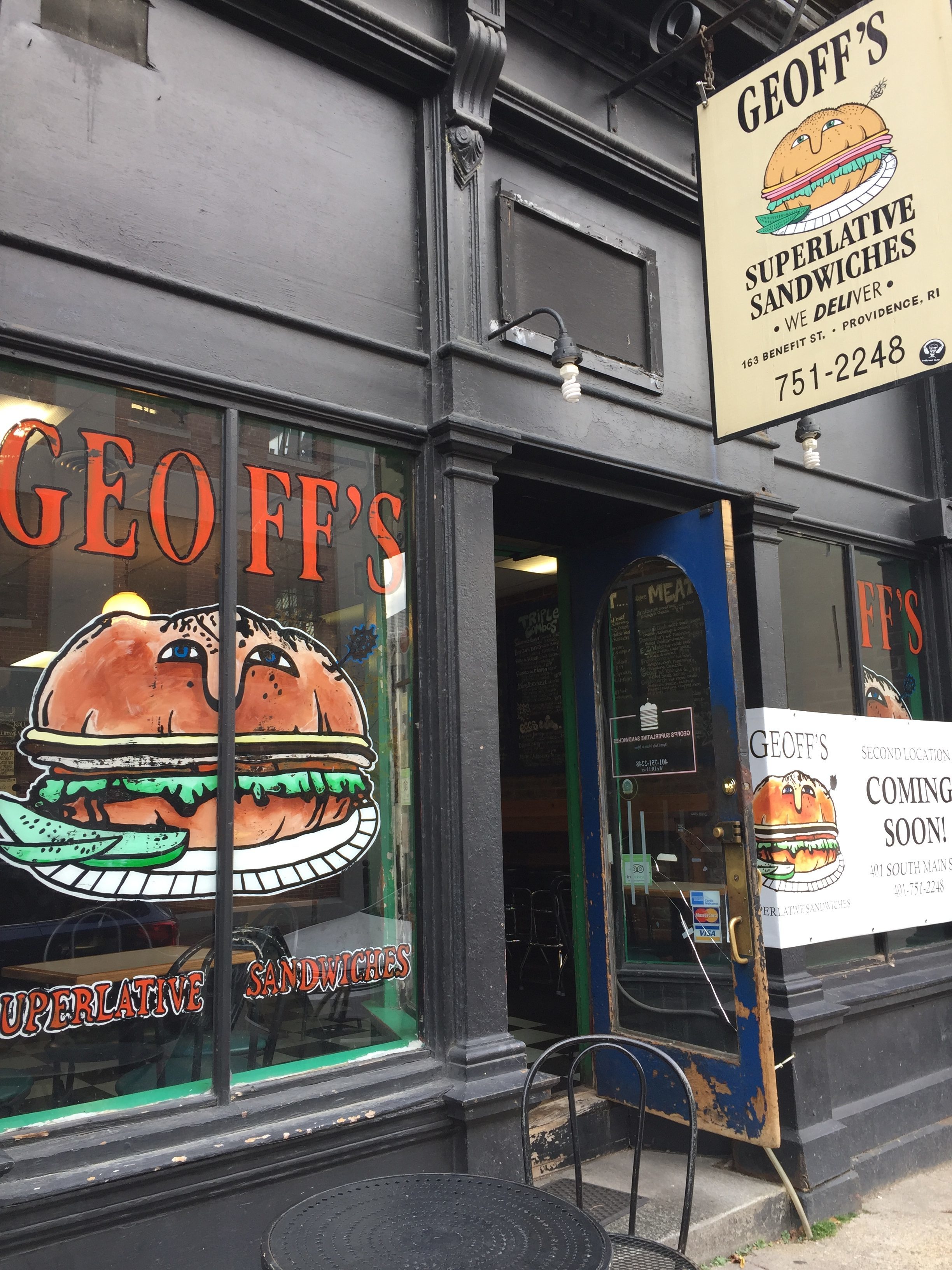My Providence! What airy hosts
Turn still thy gilded vanes;
What winds of elf that with grey ghosts
People thine ancient lanes!
–H.P. Lovecraft
 Overlooking the RISD Beach. Can you spot the State House?
Overlooking the RISD Beach. Can you spot the State House?
Knowing the risks, I drank from the mythical fountain.* The legend says: anyone who drinks from it will always return to Providence. Seems more like a self-fulfilling prophecy to me: if you like Providence enough to drink from a magical fountain, you’ll probably keep coming back.
The fountain sits in front of the Providence Athenæum, around the corner from College Street, home to both the Rhode Island School of Design and author H.P. Lovecraft. The deep affection he felt for the city is unmistakable. I remember walking down that same street for the first time, rounding the corner of the quad, and the state house—“a delirious marble dome,” as Lovecraft wrote—loomed into view, towering over the city.
There is something about Providence that called to me as a teenager, the way it called to Lovecraft, the way it did to Dr. Sydney Hansen. The calling brought me to school at RISD. The education I received was excellent, but just as invaluable were my fellow students. People who truly got me. To feel like I was somewhere that I belonged is what allowed me to really grow.
I found myself back in Providence this past October. Was it the enchanted fountain or a minor coincidence? As a student I had visited the Daniel Berkeley Updike Collection at the Providence Public Library, “a source of learning and inspiration to printers with a desire to elevate their craft through the study of the history of printing.” The Special Collections Librarian, Jordan Goffin, had invited me to help judge the Updike Prize for Student Type Design, as well as attend the award ceremony, which included a lecture by Nina Stössinger.
I had just missed my 15-year RISD reunion, so I was feeling the urge to visit some former haunts and process my thoughts. While strolling by the apartment building I lived in with my roommate Marley, I remembered the good times: the potlucks, the food fights, the Sunday brunches. Hiding an obscene picture we’d forgotten about from her parents when they came to visit. It was like something out of a sitcom. We laughed so much about it later.
 They DELIver
They DELIver
Next to our old apartment building, where there was once a Checker’s Pizza, is now a trendy café. It was strange to see a clean, brightly lit bar where there had once been a pool table in the dark, greasy hole where I’d worked my sophomore year. Geoff’s Superlative Sandwiches remains unchanged next door, with its sassy employees, and scores of cleverly-named sandwiches written in chalk on the menu. With some of their amazing bread-and-butter pickles in hand, I made my way up Meeting Street towards Prospect Park.
The park features a 15-foot granite statue of Roger Williams, founder of the Rhode Island Colony, that overlooks Providence. His right hand is out, palm down, as though he were at a standing desk, using a mouse. A man ahead of his time—a real pioneer. The trees have grown so high now that they obscure the view, but brooding spirits of awkward dates lingered on the terrace. I took a moment to catch up on work emails and to reflect on how much had changed in the past fifteen years. And how it all had started right down the hill from where I was sitting. Everything RISD and Providence had given me was permeating what I was doing at that moment.
A client had just emailed me with a dream project: highly creative work that embraced imperfections that would make type more relatable. When I first arrived at RISD, the earliest influence on this way of thinking came from a Resident Assistant. I remember sitting on the beach (a lawn at the corner of College and Benefit Streets) listening to her speak eloquently about her artistic process. She said she liked to allow the forms to emerge naturally, rather than adhering to a strict predetermined form. This concept was further shaped for me by wabi-sabi, an approach that was introduced to me as part of a junior year project.
 The green ghost of Farnum Hall
The green ghost of Farnum Hall
On the way back to campus, I passed by a tiny park that had once been student housing. Airy hosts of memories lingered: the small fire that someone accidentally started. The pet frog I ordered for a friend through the mail and immediately regretted because I was sending a frog through the mail (it turned out fine). Now all that was left of the dorm was a highly manicured patch of grass that seemed to mourn all the life the space had once cradled.
Then it was time for the award ceremony and lecture, so I headed for the auditorium. And all sorts of familiar faces poured in, colleagues such as Richard Lipton and Cyrus Highsmith; friends such as Michael Russem and Julie Baine. And others with RISD ties arrived: Tobias Frere-Jones, my former professor Lucy Hitchcock, and the Updike Prize winners—current students whose work I had debated passionately just a couple of weeks before. It all came together at once: past, present and future. Friends and educators who had helped me to get where I was, alongside the next generation whom I was there to support.
I don’t really believe in the power of the fountain. But it’s likely that I’ll keep coming back to Providence, and I’ll endeavor to share its gifts.
*This was in the ’90s, and the water was a little sketchy back then. Don’t drink from it now, that is, if it’s even working.